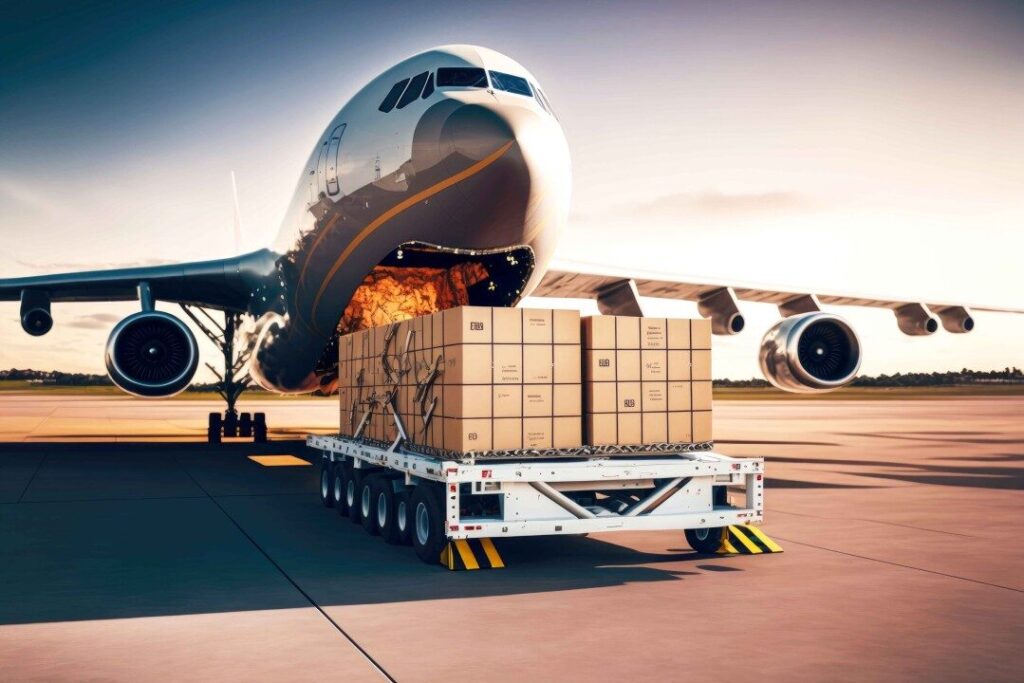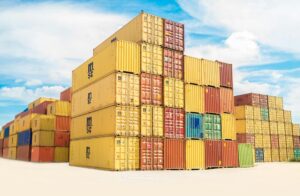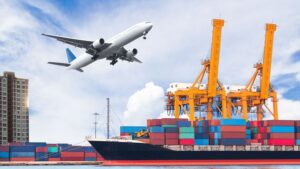In today’s fast-paced global marketplace, businesses rely on efficient and reliable methods to transport goods across continents. When it comes to shipping from China to Europe, air freight emerges as a compelling option, offering unparalleled speed and security. This comprehensive guide delves into the intricacies of air freight between these two economic powerhouses, empowering businesses to make informed decisions for their import and export needs.
Benefits of Using Air Freight from China to Europe

- Unmatched Speed: Air freight boasts the fastest delivery times, typically reaching European destinations within 3-5 business days. This swiftness is crucial for perishable goods, high-value electronics, and products with short shelf lives. Faster deliveries translate to quicker product turnover, improved cash flow, and a significant competitive edge.
- Enhanced Reliability: Air cargo offers predictable transit times, minimizing disruptions and delays that can plague ocean freight. This predictability allows businesses to plan inventory levels more effectively and ensure timely deliveries to their European customers.
- Superior Security: Air freight shipments undergo stringent security checks at origin and destination airports, significantly reducing the risk of theft, damage, or loss. This heightened security is vital for sensitive cargo, such as pharmaceuticals, high-end electronics, and luxury goods.
- Global Reach: Extensive air cargo networks connect major Chinese cities with key European hubs. This extensive connectivity ensures businesses can reach a wider customer base across Europe, facilitating seamless cross-border trade.
- Simplified Logistics: Many air freight forwarders offer door-to-door services, streamlining the logistics process. This eliminates the need for businesses to navigate complex customs clearance procedures and inland transportation arrangements.
Air Freight Process and Key Players Involved
Understanding the air freight process from China to Europe empowers businesses to navigate this complex logistical landscape effectively. Here’s a breakdown of the key players involved:
- Exporter: The company in China responsible for initiating the shipment and preparing the goods for export.
- Freight Forwarder: A logistics company that acts as an intermediary between the exporter and various service providers, coordinating the entire shipping process.
- Airline: The company that operates the aircraft transporting the cargo.
- Customs Broker: A specialist who assists with customs clearance procedures at both origin and destination points.
- Ground Handling Agent: The company responsible for loading and unloading cargo at the airport.
- Importer: The company in Europe receiving the shipment and handling customs clearance procedures upon arrival.
Understanding the Costs and Pricing of Air Freight

The cost of air freight from China to Europe can vary depending on several factors, including:
- Weight and Dimensions: Air freight charges are typically based on a combination of the gross weight and volumetric weight of the shipment. The higher of the two values determines the final cost.
- Route and Destination: The specific origin and destination cities in China and Europe can impact pricing due to factors like airport infrastructure and fuel costs.
- Fuel Surcharges: Airlines may levy additional fuel surcharges based on current market prices.
- Security Fees: Additional security charges may apply depending on the type of cargo being shipped.
- Value of Goods: High-value cargo may incur additional insurance costs.
- Forwarder Services: The range of services offered by the freight forwarder, such as customs clearance assistance or door-to-door delivery, will also influence the overall cost.
Incoterms (International Commercial Terms) play a crucial role in determining which party is responsible for various costs associated with the shipment. Understanding Incoterms is essential for businesses to negotiate pricing and ensure all parties involved are clear on their respective financial obligations.
Factors to Consider When Choosing an Air Freight Forwarder
Selecting the right air freight forwarder is paramount for a smooth and cost-effective shipping experience. Here are some key considerations:
- Experience and Reputation: Choose a forwarder with a proven track record in handling air freight shipments between China and Europe. Look for a company with expertise in your specific industry and cargo type.
- Service Offerings: Evaluate the range of services offered by the forwarder, including customs clearance assistance, cargo insurance, tracking capabilities, and door-to-door delivery options.
- Competitive Rates: Obtain quotes from several reputable forwarders to compare pricing structures and identify the most cost-effective solution.
- Communication and Transparency: Ensure the forwarder provides clear communication throughout the shipping process and maintains transparency regarding costs and potential delays.
Customs and Documentation Requirements for Air Freight Shipments

Customs clearance is a vital step in air freight. Here’s an overview of the essential documents required:
- Commercial Invoice: A detailed document outlining the value, quantity, and description of the goods being shipped.
- Packing List: An itemized list detailing the contents of each package within the shipment.
- Bill of Lading (BOL): A document issued by the airline serving as a contract of carriage and a receipt for the goods.
- Certificate of Origin: A document certifying the country of origin of the goods, often required for customs purposes.
- Export License: Certain goods may require an export license from the Chinese authorities.
- Import License: Specific goods may require an import license in the European destination country.
It’s crucial to ensure all documentation is accurate and complete to avoid delays or penalties at customs. Partnering with a knowledgeable freight forwarder can help businesses navigate the complexities of customs clearance and ensure their shipments comply with all regulations.
Tips for Optimizing Air Freight Logistics and Reducing Transit Times
Several strategies can be employed to streamline the air freight process and minimize transit times:
- Accurate Forecasting and Planning: Accurate forecasting of demand allows businesses to book air freight capacity in advance, potentially securing better rates and avoiding delays during peak seasons.
- Consolidation of Shipments: Consolidating smaller shipments into larger ones can lead to cost savings and potentially reduce handling times.
- Proper Packaging: Using high-quality, secure packaging that complies with airline regulations can expedite the loading and unloading process.
- Electronic Data Interchange (EDI): Utilizing EDI allows for the seamless exchange of trade documents between businesses, customs authorities, and other stakeholders, accelerating the clearance process.
- Clear Communication: Maintaining clear communication with all parties involved in the supply chain, including the exporter, freight forwarder, airline, and importer, is vital for identifying and addressing potential bottlenecks.
By implementing these strategies, businesses can achieve faster transit times, improve overall supply chain efficiency, and gain a competitive edge in the European marketplace.
Challenges and Potential Risks in Air Freight from China to Europe

While air freight offers substantial advantages, there are also challenges and potential risks to consider:
- Cost: Air freight is typically the most expensive mode of international transportation compared to ocean freight. Businesses need to carefully weigh the cost implications against the benefits of speed and security.
- Capacity Limitations: Air cargo capacity can fluctuate depending on factors like seasonality and global economic conditions. During peak periods, securing space on flights can be challenging, potentially leading to delays and higher costs.
- Fuel Price Volatility: Air freight costs are susceptible to fluctuations in fuel prices, which can impact overall shipping budgets.
- Weather Disruptions: Adverse weather conditions at origin or destination airports can cause delays in air cargo movement.
Careful planning, utilizing a reliable freight forwarder, and monitoring potential disruptions can help businesses mitigate these risks and ensure a smooth air freight experience.
Alternative Modes of Transportation for International Trade
While air freight is a compelling option for many businesses, alternative modes of transportation may be suitable depending on specific needs and priorities. Here’s a brief overview of other options:
- Ocean Freight: Ocean freight offers the most cost-effective method for transporting large volumes of non-perishable goods. However, transit times can range from several weeks to months.
- Rail Freight: Rail freight provides a balance between cost and speed, particularly for shipments traveling between inland destinations in China and Europe.
- Multimodal Transportation: Combining different modes of transportation, such as air freight for a first leg and ocean freight for the remaining journey, can be a cost-effective strategy for specific scenarios.
The optimal transportation mode depends on various factors, including the type of goods, budget constraints, desired delivery timeframe, and environmental considerations. Carefully evaluating these factors will guide businesses in selecting the most suitable solution for their specific import and export needs.





